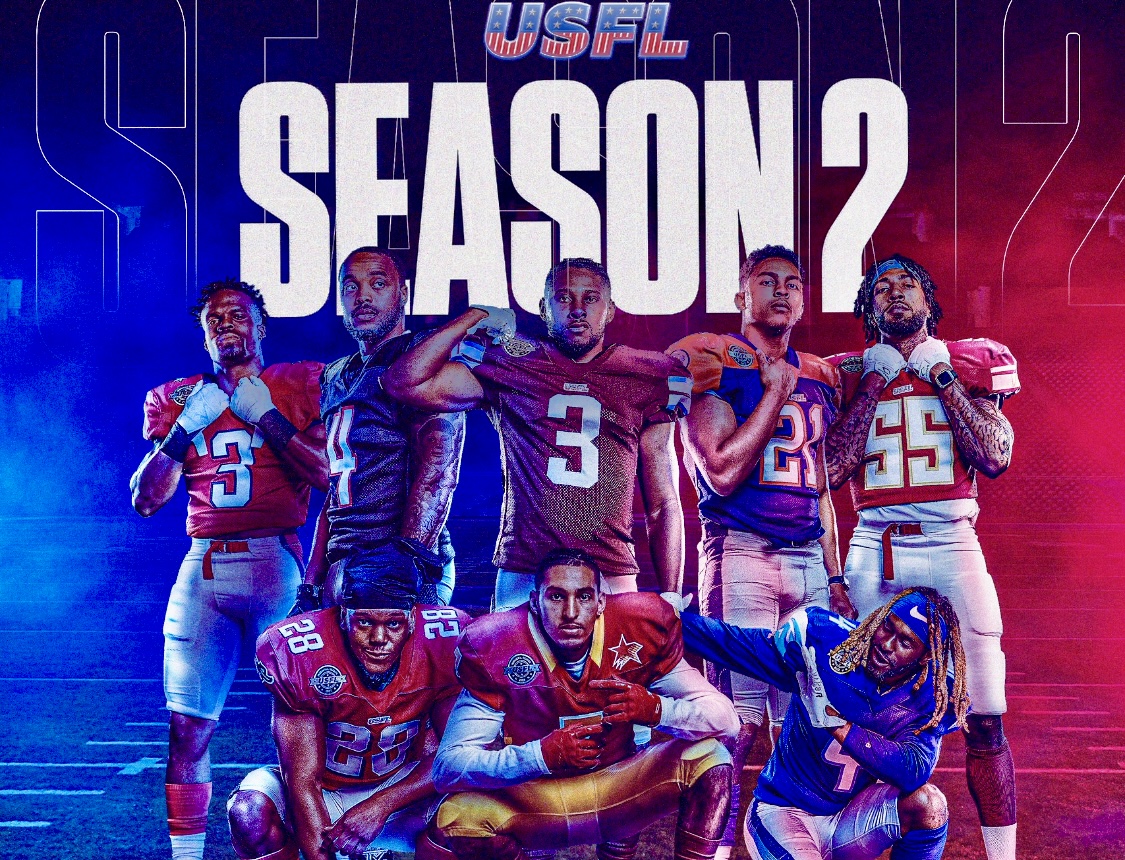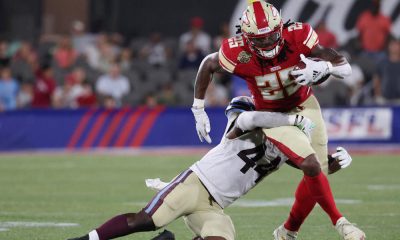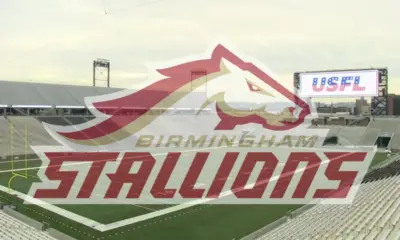
The USFL 2022 Season is over, and the push toward Season 2 of the New USFL is already underway. But there are many questions about the league’s direction. And the moves the USFL makes will determine whether the league can go from surviving to thriving.
Is The New USFL Bucking History?
Some would argue that the USFL is bucking its own history by acting as if its 2022 season was an inaugural affair. The league is hyping Season 2. But the United States Football League already had three seasons decades ago.
As chronicled and reported here frequently, the awkwardness of the current USFL not embracing the original league is not a fault of the USFL’s new leadership. For legal reasons, they have been unable to lean on their history.
Factual semantics aside. The main part of history that the new USFL challenges is the inevitable fate that has doomed similar entities in the past.
History has not favored non-NFL pro football leagues in the United States. The Canadian Football League, through all of its trials and tribulations, has weathered the storms of the past and the present day to stand the test of time.
But in America, the graveyards are filled with non-NFL pro leagues. That’s why understandably so, anytime a new pro football league has popped up on the scene, most people expect and predict an eventual demise. You can’t blame them. After all, they are only going by the history books Because no one else has defied death in this landscape.
The new iteration of the USFL is popping champagne after completing its 2022 season. Some would argue that they have every right to celebrate the accomplishment. After all, they are the first spring pro football league in the United States that has finished an entire season in recent times. Excluding the mostly-forgotten Spring League on FOX last year.
Simply not collapsing immediately qualifies as a success compared to many other doomed entities in this space. Especially considering what happened to the AAF and the XFL on two separate occasions.
However, it would be best if you quantified the new USFL’s accomplishments properly.
Firstly, there have been pro football leagues in the United States that have completed an entire season. Two of them were under the watch of USFL executive Brian Woods. The aforementioned TSL on FOX in 2021 and the FXFL. The Fall Xperimental Football League got to year three. But its collapse fits the ancient saying, “If a tree falls in a forest and no one is around to hear it, does it make a sound?
The United Football League completed four seasons from 2009-2012. Well, kind of, the UFL limped their way badly through year four. They never got beyond eight games in a season and failed to field more than five teams.
The league barely got any attention. It didn’t help that they foolishly attempted to generate interest by playing in the fall during the NFL and college season. Most sports fans forget or even know that the UFL existed. Maybe some remember the late Marty Schottenheimer and Jim Fassel winning championships. Or Josh McCown, Daunte Culpepper, and Jeff Garcia slinging passes in UFL games. Or that Denzel Washington’s son John David played in the league. But the league is barely a footnote a decade after they completed several seasons.
When most people talk about failed spring pro football leagues in the United States, surprisingly, the NFL’s attempt at having a secondary league in the Spring is glossed over. The brainchild of former commissioner Paul Tagliabue as a spring developmental league.
The World League Of American Football fielded ten teams, six teams in the United States (Birmingham, New York/New Jersey, San Antonio, Orlando, Raleigh Durham, and Sacramento. Three teams in Europe (Barcelona, London, and Frankfurt, Germany). And one in Canada, the Montreal Machine.
The WLAF started play in March of 1991 and lasted only two seasons. Before being repackaged as NFL Europe. The scaled-down and remodeled NFL-backed league aired games on several prominent TV outlets, including FOX, and completed 13 seasons before discontinuing operations in 2007.
So technically, for the record books. The 2022 version of the USFL is the first spring pro football league in the United States that paid all its players to finish a season since the 2001 version of the XFL. And their journey into season 2 makes them the first thoroughly American spring pro football league to do so since the original USFL in the 80s.
Completing a season is an accomplishment by the FOX Sports-owned version of the USFL. But it’s not uncharted territory, and it’s been done before. Getting to a second or a third season is excellent. But the type of league you are when you get there is of utmost importance. Other leagues got to that point. But they didn’t excel when they did.
The new USFL has a lot going for it. Having a network as the league’s owner certainly helps. And perhaps the completion of its season with another one on the horizon will help engender football fans who were dismissive of the league’s existence in 2022. But other crucial factors in play will determine if the USFL can truly buck history and last.
Will The USFL Go Into Team Markets Next Season?
This topic has been covered ad nauseam here at USFLNewshub, and by so many others who have been tracking the USFL. Everyone knows that for the USFL to maximize the league’s interest and become a traditional fully-fledged pro football league. They need to go into their team’s markets.
The USFL’s most prominent weaknesses were its poor attendance in its hub setting in Birmingham for non-Stallions games. And the league’s inability to connect with fans in most of their city-named teams’ markets. The artificial nature of a Pittsburgh or Houston-based team, for example, playing in the South all season, didn’t help the league’s legitimacy. And the embarrassingly low-attended games also hurt the league’s image and credibility amongst casual and mainstream football fans.
FOX Sports knows this. It’s why league executives like Daryl ‘Moose Johnston” have publicly discussed the possibility of a potential second hub in a Northern city if the USFL can’t find a way to put all eight teams in their cities.
New York Post’s Business reporter Josh Kosman recently reported that The Fox Sports-owned United States Football League had hired investment bank Allen & Co. to find minority investors to help fund the league’s expansion into local markets. Fox’s reported plan is to raise between $150 million and $200 million.
FOX can’t repeat the same setup for the USFL it had in Birmingham in 2022, and they won’t say it publicly. But actions speak louder than words, and it’s the reason why they are seeking significant capital.
Having a second hub in a Northern City. Like perhaps in Philly would be a compromise if the league can’t go into their markets. However, it’s not necessarily a happy medium. A step forward, yes, but a baby step at best.
The USFL product, as evidenced by an engaged crowd in the league’s championship game, was a much better TV product. And it showed up in the ratings. The audience grew as the game continued until its climax. It helped that the Stallions made the big game. But it’s no surprise that the one market with a team set up shop in their city garnered the most interest. The Stallions had a 10.9 household rating locally for the game.
Moving seven of the league’s teams (minus the league champs Birmingham) into their respective markets is easier said than done, especially if you don’t have individual team owners to pick up the operation costs. It’s why funding is needed to cover the cost of paying for team employees, headquarters, training, and practice facilities, venue leases, travel costs, etc. etc., etc.
The sooner all USFL teams are in their local markets. The better. Because there is another spring pro football league coming with deep pockets and a strong TV partner headed into markets immediately.
How Will The USFL Deal With The XF-Elephant In The Room?
The USFL is fully aware that the Spring Pro Football League landscape will have some significant competition. And FOX has already taken preemptive measures to prepare for the arrival of RedBird Capital, Dany Garcia, and Dwayne ‘The Rock’ Johnson’s XFL.
By the time the new USFL presents its 2023 follow-up season in mid-April. XFL 3.0 will have already arrived on the scene on ABC and ESPN. The USFL hasn’t officially announced the start of their 2023 season, but it will start as the new XFL is finishing theirs.
The XFL will play in all eight team markets right out the gate. And they will be doing it before the USFL does. The USFL may have gotten to the dance first. But the XFL will immediately be dancing with all their dance partners. They have an opportunity to connect to all their cities better than the USFL did in 2022.
The jury is out on the type of league; the XFL will be under new leadership. But they have a ton of financial backing and plenty of promotional power with Dwayne Johnson and Disney. The early word from sources is that the XFL plans on paying their quarterbacks upwards of six figures per season, with the average player salary being in the neighborhood of $65,000.
The feeling amongst the football community and player agents is that the new XFL has several advantages over the USFL. Besides potentially higher salaries. Chief among them is the XFL’s positioning on the calendar. With their league ending its season in late April. It creates a better window for players to recover from playing an entire season in the spring and enhances their odds of latching onto NFL teams and making them in September.
Many players shined in the 2022 USFL season who are undoubtedly deserving of NFL opportunities. But with NFL rosters currently filled at the maximum of 90. The feeling is that the doorway for USFL players onto an NFL camp roster is much more challenging than it would have been three months ago. The AAF and XFL had over two dozen players each who got onto NFL rosters when their seasons concluded. Many of those players had ample time to prove themselves and are still on NFL rosters years later.
NFL training camps don’t start until later this month. Things could pick up for 2022 USFL players later this summer.
Based on past spring pro football league success (54 AAF signings/58 XFL) and conversations with football personnel. I fully expect 40-50 plus USFL players to sign onto NFL teams when camps start and during the preseason.
The question will be if there is enough time for players to stick joining NFL teams late in the process.
The USFL has already countered the possibility of player defections to an enticing XFL option by structuring their player contracts with second-year clauses to prevent players from jumping ship to any league not named the NFL.
It’s not only an intelligent play but a necessary one by the USFL. And in a way, it could also benefit the league’s continuity for year two. All eight USFL teams will likely keep most of their best players for next season.
Birmingham Stallions head coach Skip Holtz recently told the Patrick Netherton Show that USFL team rosters would expand from 50 (40 actives + 10 practice squad) to 75 players in the offseason. Holtz also stated that USFL teams would be conducting offseason team activities starting in their local markets this October.
Adding 25 extra players per roster for all eight teams means 200 new players could gain entry into the USFL several months before training camp and season 2 begins in 2023.
A good number of those players could be street-free agents who didn’t join the league in 2022. Or players who miss the cut on NFL teams’ active or practice squad rosters this September.
But the USFL will have competition for these players from the arriving XFL, who will be in the market for the same players. XFL 3.0 is currently conducting player showcases across the country. The league has worked out 600 players at three showcases. They have three left this summer. They may find some hidden gems. But there’s no doubt that their primary targets will be veteran free agents who opted not to play in the USFL and are currently not on NFL rosters. And players who are presently on NFL rosters.
The bottom line for both the USFL and XFL will be presenting a league that players will want to play for over the other. College football players and young pro football players will all benefit from the existence of both leagues.
Salary and the playing calendar could favor the XFL in their pitch to agents and players. But perhaps added funding could lead to the USFL paying above $45k per season to its players. They might have to in the long run in their battle with the upcoming XFL.
The competition between the USFL and XFL could extend beyond the players. It’s no secret that coaches like Bob Stoops and Wade Phillips chose the XFL over potentially coaching in the USFL. And sources have indicated to USFLNewsHub for several weeks that one of the USFL’s prominent defensive coordinators has already accepted the same position on Rod Woodson’s XFL staff. Woodson is teamed up with Joseph Clinkscales of the Tampa Bay Bandits who departed the USFL to assume the Director of Player Personnel role with Las Vegas.
The first of many strikes between both leagues in the coming weeks and months.
Mission accomplished by the 2022 version of the USFL. They are headed towards an entire offseason and a season 2. A world that spring pro football league enthusiasts haven’t experienced for a long time. Phase one completed. The next phase will determine the USFL’s long-term viability.













